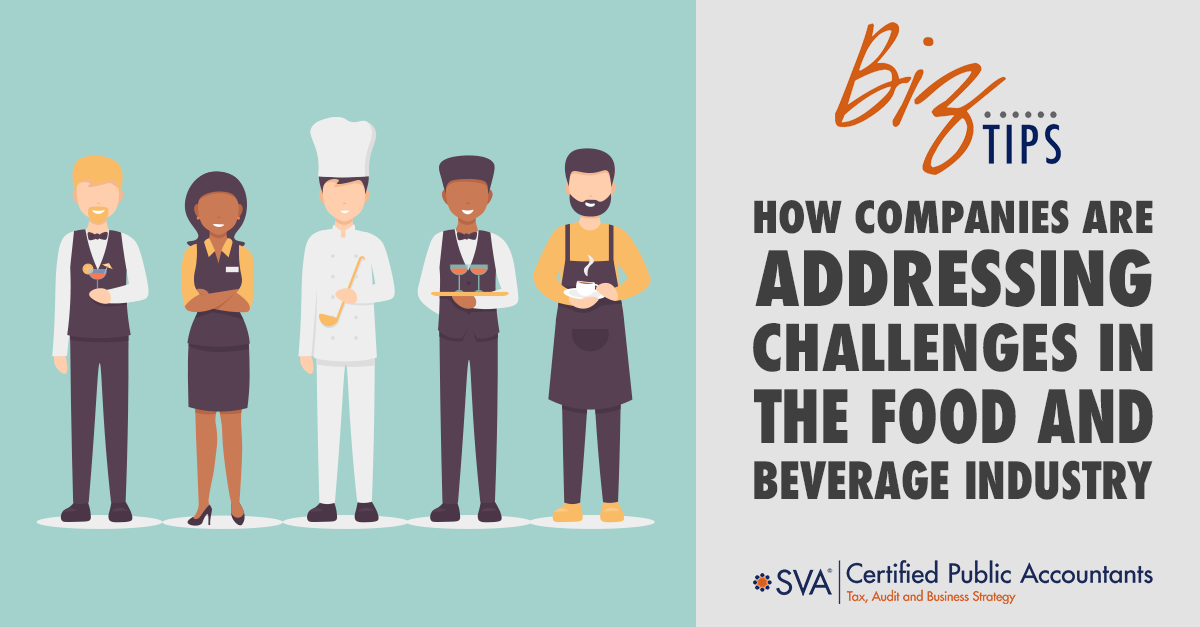There have been a lot of changes in the food and beverage industry over the past few years, but those changes saw rapid acceleration during the COVID-19 pandemic.
Though the industry reported growth in November 2021, the growth that was seen in the industry is challenged by disruptions in supply chains, labor shortages, and turnover problems, even as demand continues to grow.
Let's take a look at these different challenges and determine how food and beverage companies are dealing with these problems.
Consumer Behavior Changes
A fundamental shift in consumer food behavior and preferences had already started prior to COVID-19, with an increased focus on healthier eating with simpler ingredients, transparency, and customization. A focus on sustainability was also part of the shift, changing to organic, meat-free, and non-GMO options, as well as recyclable or reusable packaging. Vegan meat demand increased 27% from 2019 to 2020, with non-GMO foods forecasted to grow 16% in the next five years.
The pandemic accelerated these shifts, which are becoming permanent. Government-ordered restaurant closures drove consumers to grocery stores to purchase food and eat at home more often. This change fueled demand for food delivery, including huge growth in direct-to-consumer food subscriptions such as home meal prep kits and grocery delivery, seeing a 333% rise during the pandemic.
It's also impacted packaging, pushing towards individual packages instead of large shared bags. Because consumers historically have had low trust in companies for food safety, companies undertake extra overhead expenses to ensure that the food they deliver is of high quality, fresh, delivered safely, and sustainably packaged with ice packs and insulated bags.
Restaurants also saw an uptick in deliveries and carryout during the pandemic. These changes have impacted the industry in many ways. They include companies that were in flat growth and planning closures that began to see sales and growth, accounting for the 40% increase in manufacturing, with food and beverage one of the three most active sectors. Supply chain issues such as material shortages, labor shortages, and trucking shortages also caused issues as companies pivoted to meet new customer preferences so that they can provide customized products, deliveries, and tracking. Groceries had to upgrade shelf-stocking processes to keep up with consumers suddenly eating at home.
Worker Shortages
Given the worker shortages in industries around the world, lack of childcare for home-bound schoolchildren, fear of contracting COVID-19, and similar concerns, the lower wages paid in the food and beverage industry have driven many into better employment. During stay-at-home situations, many of these workers filed for unemployment and then improved their education, moving into better opportunities.
Similarly, as demand for rapid shifts in the supply chain from commercial to consumer occurred, finding sufficient truck drivers became difficult, especially as home-delivery and direct-to-consumer business models took off. The shortage was exacerbated by the fact that a third of all drivers are over age 55, creating a crisis in the industry in the future. This is causing serious supply chain and logistics issues, including rising shipping costs, poor delivery consistency, and product spoilage, which is exacerbated by other logistics labor shortages.
Raw Material Shortages
As the COVID-19 pandemic spread, shutdowns at mines, logging camps, processing plants, and similar locations impacted material supplies. This includes construction materials, packaging, shipping containers, pallets, glass bottles, and similar issues. There have also been issues in the agricultural field, impacting the supply of food both this past year and the upcoming year. Issues with fertilizer and pesticide deliveries have increased fertilizer costs by around 35% while pesticides have increased 25%, which is impacting the cost of food on a daily basis.
Facing These Challenges
There has been a range of responses to these challenges by the food and beverage industry to help improve the industry's standing:
Retaining Employees
To retain and recruit more employees, leaders in the food industry have realized that workers must be treated better. Improved benefits (including health insurance, better wages, and a safe working environment) help remedy the current shortage of workers that is having such a marked impact on the industry. By taking these factors into consideration, the worker shortage should improve over time.
Vertical Integration and Supplier Diversity
Supply chain challenges are causing food and beverage companies to consider vertical integration. This includes the entire supply chain, from grower to shipping to the final customer. Prior to COVID-19, last-minute fulfillment was the focus, keeping supply chains lean, but given the issues during the pandemic, companies are rethinking that approach, including raising inventory levels and keeping inventory closer to consumers while branching out with vendors to ensure consistent supply.
Embracing Tech and Automation
Many companies saw during the pandemic that they needed to embrace modernization, digital transformation, and automation. By embracing digital transformation, automation allows many tasks to be completed despite labor shortages. Analytics, management systems, and forecasting systems are needed to help business leaders make decisions in real-time.
By adopting these changes, the food and beverage industry can more easily pivot to shifting consumer demands, allowing businesses to grow while remaining flexible to market conditions.
Though nobody can predict the future, the way that the industry has survived the COVID-19 pandemic shows its overall resilience even during times of great challenge. This will allow the industry to grow into a brave new future together.
If you have any questions or need help adopting the changes, contact SVA.
© 2022 CPA ContentPlus

